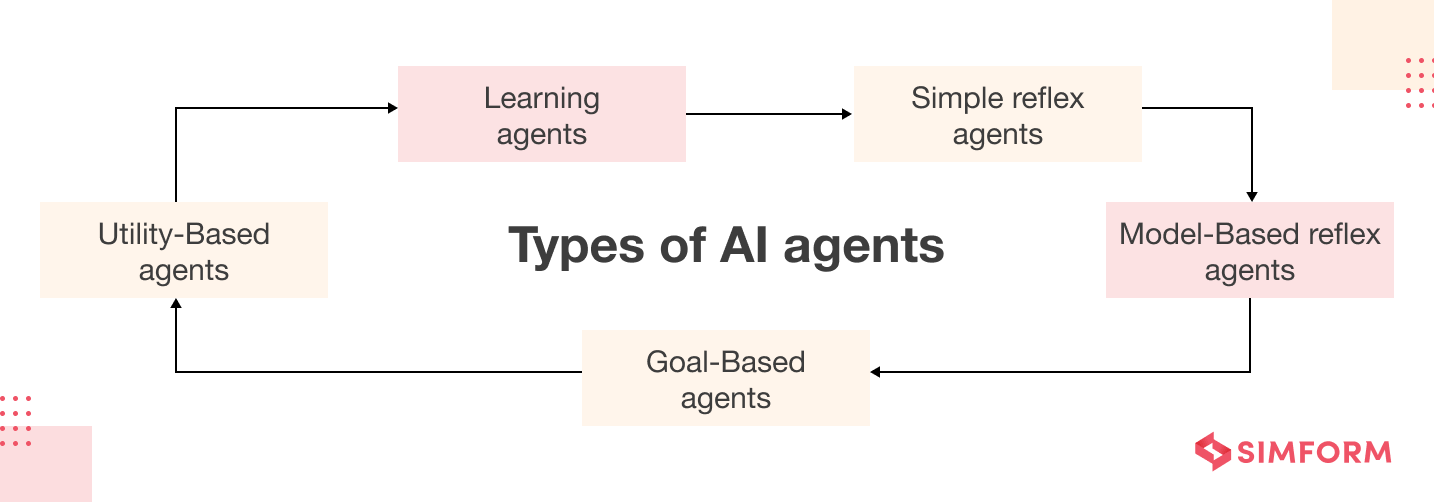Defining AI Agents and Their Characteristics
Defining AI Agents and Their Characteristics involves understanding what constitutes an AI agent and the fundamental properties that distinguish it from other types of software or systems.
An AI Agent is essentially an autonomous entity, whether physical (like a robot) or virtual (like a software program), that perceives its environment through sensors and acts upon that environment through actuators (which can be physical actions or simply changes in its internal state or outputs). The key goal is to act in a way that maximizes the agent's chance of successfully achieving its goals.
Key Characteristics of AI Agents:
Autonomy: AI agents operate with minimal human intervention. They can make decisions independently based on their perceptions and pre-programmed knowledge or learned experiences. Example: A self-driving car autonomously navigates roads, making decisions about speed, lane changes, and braking without constant human control.
Perception: Agents must be able to perceive their environment using sensors or inputs. This could be visual input, auditory input, data streams, or any other form of information about the world around them. Example: A spam filter perceives emails by analyzing their content, sender information, and other features to identify potential spam.
Action: Based on their perception and internal logic, agents take actions to modify their environment. These actions are geared towards achieving their goals. Example: A chatbot responds to user queries with relevant information or performs tasks like booking reservations.
Goal-Orientedness: Agents are designed to achieve specific goals or objectives. Their actions are directed towards maximizing their chances of success in achieving these goals. Example: A game-playing AI agent aims to win the game by making strategic moves.
Rationality: Agents strive to act rationally, meaning they attempt to do the "right" thing based on their knowledge, beliefs, and goals. "Right" in this context means the action that is most likely to lead to the achievement of the agent's goals, given the available information. Note that perfect rationality is often impossible due to limitations in perception, computation, or knowledge. Example: An AI-powered medical diagnosis tool attempts to provide the most accurate diagnosis and treatment plan based on patient symptoms and medical data. If a better test is available but too expensive, it might choose the next best test to conserve resources and get a "good enough" diagnosis.
Learning: Agents can improve their performance over time by learning from their experiences. This can involve adapting their behavior based on feedback, discovering new patterns in data, or refining their understanding of the world. Example: A recommender system learns user preferences based on their past interactions and provides increasingly relevant recommendations over time.
These characteristics are not mutually exclusive; an agent can (and often does) possess multiple characteristics simultaneously. The specific design and implementation of an AI agent depend on the specific task it is intended to perform and the environment in which it will operate.

Defining AI Agents and Their Characteristics
Defining AI Agents and Their Characteristics involves understanding what constitutes an AI agent and the fundamental properties that distinguish it from other types of software or systems.
An AI Agent is essentially an autonomous entity, whether physical (like a robot) or virtual (like a software program), that perceives its environment through sensors and acts upon that environment through actuators (which can be physical actions or simply changes in its internal state or outputs). The key goal is to act in a way that maximizes the agent's chance of successfully achieving its goals.
Key Characteristics of AI Agents:
Autonomy: AI agents operate with minimal human intervention. They can make decisions independently based on their perceptions and pre-programmed knowledge or learned experiences. Example: A self-driving car autonomously navigates roads, making decisions about speed, lane changes, and braking without constant human control.
Perception: Agents must be able to perceive their environment using sensors or inputs. This could be visual input, auditory input, data streams, or any other form of information about the world around them. Example: A spam filter perceives emails by analyzing their content, sender information, and other features to identify potential spam.
Action: Based on their perception and internal logic, agents take actions to modify their environment. These actions are geared towards achieving their goals. Example: A chatbot responds to user queries with relevant information or performs tasks like booking reservations.
Goal-Orientedness: Agents are designed to achieve specific goals or objectives. Their actions are directed towards maximizing their chances of success in achieving these goals. Example: A game-playing AI agent aims to win the game by making strategic moves.
Rationality: Agents strive to act rationally, meaning they attempt to do the "right" thing based on their knowledge, beliefs, and goals. "Right" in this context means the action that is most likely to lead to the achievement of the agent's goals, given the available information. Note that perfect rationality is often impossible due to limitations in perception, computation, or knowledge. Example: An AI-powered medical diagnosis tool attempts to provide the most accurate diagnosis and treatment plan based on patient symptoms and medical data. If a better test is available but too expensive, it might choose the next best test to conserve resources and get a "good enough" diagnosis.
Learning: Agents can improve their performance over time by learning from their experiences. This can involve adapting their behavior based on feedback, discovering new patterns in data, or refining their understanding of the world. Example: A recommender system learns user preferences based on their past interactions and provides increasingly relevant recommendations over time.
These characteristics are not mutually exclusive; an agent can (and often does) possess multiple characteristics simultaneously. The specific design and implementation of an AI agent depend on the specific task it is intended to perform and the environment in which it will operate.
